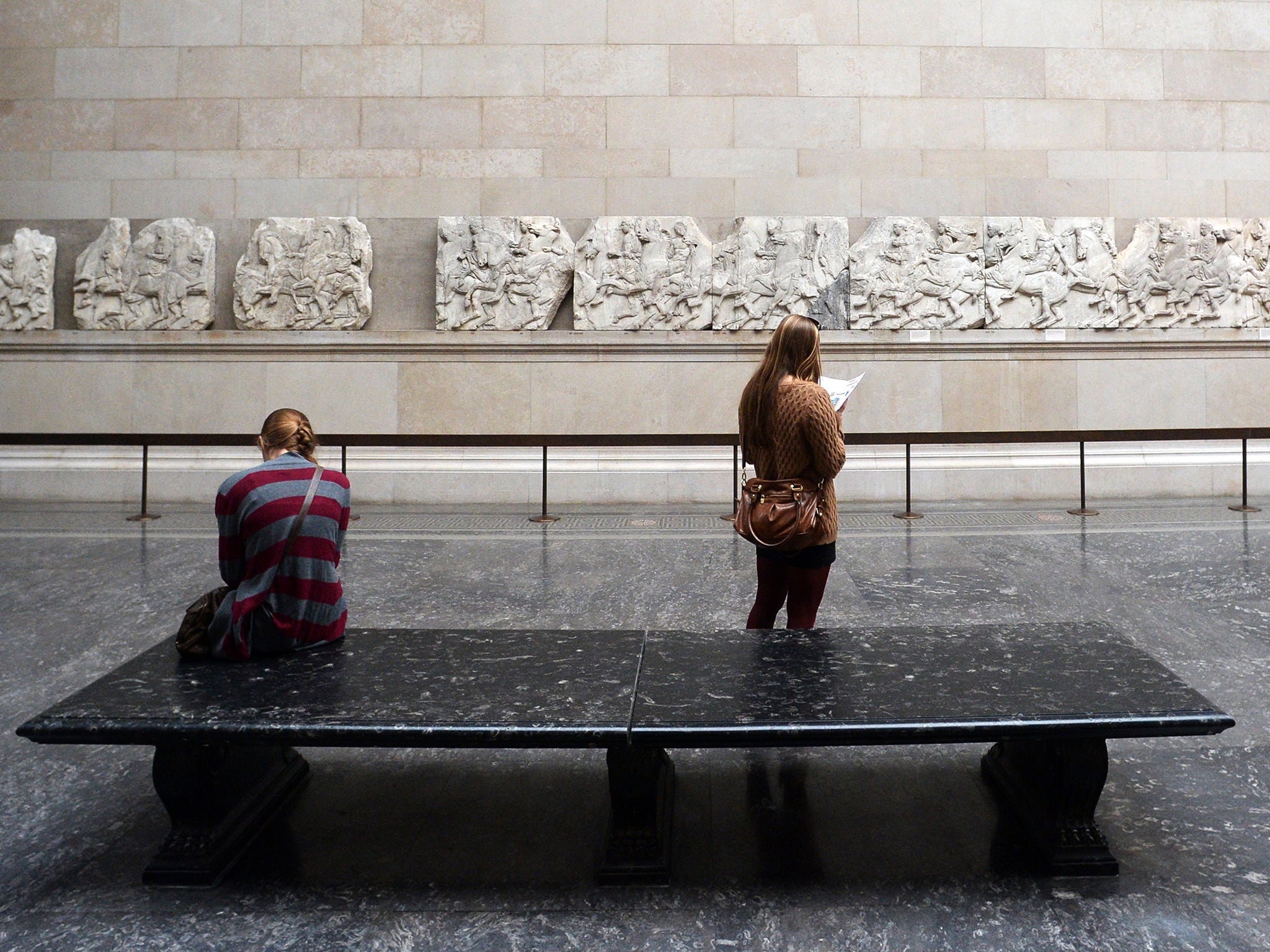There’s more to the British Museum than the Elgin Marbles in digital form
There is something that will be lost in the great digital capture

Your support helps us to tell the story
From reproductive rights to climate change to Big Tech, The Independent is on the ground when the story is developing. Whether it's investigating the financials of Elon Musk's pro-Trump PAC or producing our latest documentary, 'The A Word', which shines a light on the American women fighting for reproductive rights, we know how important it is to parse out the facts from the messaging.
At such a critical moment in US history, we need reporters on the ground. Your donation allows us to keep sending journalists to speak to both sides of the story.
The Independent is trusted by Americans across the entire political spectrum. And unlike many other quality news outlets, we choose not to lock Americans out of our reporting and analysis with paywalls. We believe quality journalism should be available to everyone, paid for by those who can afford it.
Your support makes all the difference.Thanks to Google Street View and wi-fi – bits of kit I think we can safely say were unknown to the 18th-century founders of the British Museum – the Enlightenment dream of incarnating a “museum for the world” has indeed come to pass. After 15 months of filming, the entire place is now available in great digital detail in a virtual “walk round”, so you can visit each of its 85 galleries without ever having to leave home.
In the words of the museum’s director, Neil MacGregor: “Every person on the planet will be able to walk around the museum, to explore the world in their own way.” It is a giant project, and a testimony not only to MacGregor’s famous determination for meaningful accessibility, but also his ease with technology.
You can get out of bed and, if you feel like it, check out the 1,600-year-old Admonitions Scroll over breakfast. You can look at the mummy of the young Egyptian priest Nesperennub on your phone during the morning commute. Or just stay on your sofa examining winged Assyrian lions, the chessmen of Lewis, phallic symbols, coins, fishing nets, button badges and the other 4,500 objects in the museum which have been captured in painstaking detail by Street View’s digital eye. In these dark times, when fanatics from Islamic State seem bent on denying the world key items from its history, the British Museum is as determinedly going the other way.
Many will click straight to the two celebrity items in the collection, about which there is a perennial argument: the Rosetta Stone, whose absence from Cairo is flagged up prominently in the Egyptian city, and the Elgin Marbles, about whose restitution the Greeks have been campaigning for decades.
Does the online presence of these artefacts blow the argument for repatriation out of the water? I rather think it does – certainly in the case of the Marbles, since one of Athens’ major arguments has always been that their position in Bloomsbury makes it rather difficult for the average Greek to see them. Not any more. You can log on from Athens – or wherever you like – and spend all day counting the folds of a warrior’s tunic or examining the veins on the neck of a rearing horse. No crowds will jostle you. No annoying child will start wailing, or tiresome tourist position themselves in your eyeline to take a selfie in front of the river god Ilissos. No security jobsworth will chide you for being too close. Access? You’re welcome.
There’s more, for where the British Museum goes, everyone else follows. It will be a matter of mere months before the Louvre, V&A, the Met and the rest join the digital party, which means that the notion of “saving art for the nation” – a policy which I have always felt to be morally bankrupt at best and grimly xenophobic at worst (tell me why should a Botticelli Madonna not go to Texas? Are the Texans not worthy of Botticelli?) – won’t butter any parsnips, if ever it did.
Yet there is something that will be lost in the great digital capture, and this is the reality of actually standing in the great space of the museum and looking at the one and the only Rosetta Stone, even alongside all those the selfie sticks and crying babies. In a digital age, reality is becoming a fast-vanishing luxury.
This week I managed to achieve a first, by existing both in reality and virtual space thanks to the Bridport Literary Festival, or BridLit. I had been booked to speak about my novel alongside the writer Gill Hornby, but a diary clash meant I was forced to pull out. Not for the BridLit’s avid Twitter feed, however. In the run-up to the event, I was alarmed to see enthusiastic tweets along the lines of “Come and hear Rosie Millard and Gill Hornby talking about their wonderful new books”, with time, place and date stated. I called the festival organisers. I explained that, as they already knew, this was incorrect. They apologised. The preordained tweets continued. “Are you ready for Gill and Rosie?” I started to have an out-of-body sensibility on life.
Yesterday, I reportedly achieved the impossible: I lived in a parallel universal. “Two brilliant journalists Gill Hornby and Rosie Millard have been talking with Sally Laverack about their fiction…” Very complimentary, especially the brilliant bit – but the reality was that I was in Hull. Digital reality? It’s definitely not all there is.
Join our commenting forum
Join thought-provoking conversations, follow other Independent readers and see their replies
Comments